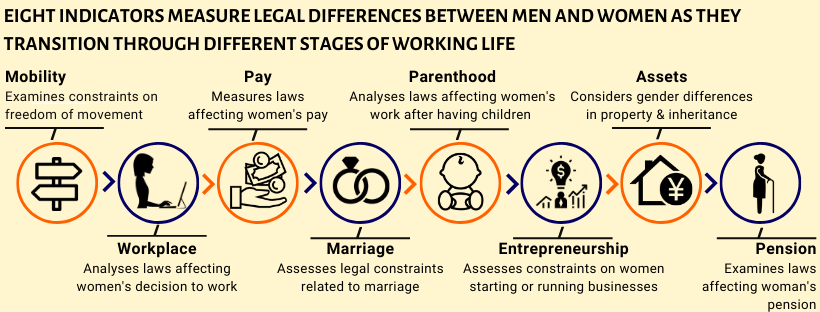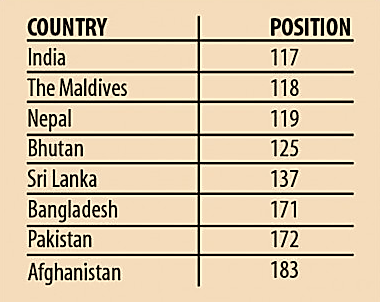Women, Business And The Law 2020
- 18 Jan 2020
- On 15th January, 2020, the World Bank released a report - Women, Business and the Law 2020, which analyzes the laws and regulations affecting women’s economic opportunity all over the world.
Goal
- The ultimate goal is to encourage governments to reform laws that hold women back from working and doing business.
About the Women, Business and the Law
- Women, Business, and the Law (WBL) is a World Bank Group project that collects unique data on the laws and regulations that restrict women’s economic opportunities to improve gender equality.
- WBL 2020, sixth in the series, measure 190 economies, track how laws affect women at different stages in their working lives and focusing on those laws applicable in the main business city.
- It covers reforms in eight areas that are associated with women’s economic empowerment, conducted from June 2017 to September 2019.
- The indicators are used to build evidence of the relationship between legal gender equality and women’s entrepreneurship and employment.
Eight Indicators
Mobility, Workplace, Pay, Marriage, Parenthood, Entrepreneurship, Assets, and Pension

Key Highlights
- The global average score in 2019 is 2, up from 73.9 in 2017 but the overall pace of reform has been slow.
- On average, women have just three-fourths of the legal rights afforded to men.
- The areas of Workplace and Marriage saw many reforms, especially in the enactment of laws that protect women from violence. In the last two years, eight economies enacted legislation on domestic violence for the first time. Seven economies now have new legal protections against sexual harassment in employment.
- Since 2017, forty economies have enacted 62 reforms enhancing gender equality.
Performance
- Eight economies—Belgium, Canada, Denmark, France, Iceland, Latvia, Luxembourg and Sweden—score 100, meaning that women are on an equal legal standing with men across all eight indicators.
- The economies that improved the most are Saudi Arabia, the United Arab Emirates, Nepal, South Sudan, Sao Tome and Principe, Bahrain, the Democratic Republic of Congo, Djibouti, Jordan, and Tunisia.
Region-wise Performance
- Regional distribution patterns have remained unchanged since 2017. The Organisation for Economic Co-operation and Development (OECD) high income economies score the highest, followed by the Europe and Central Asia, Latin America and the Caribbean, and East Asia and the Pacific regions.
- Economies in Sub-Saharan Africa have an average regional score of 69.9, while economies in South Asia score 62.3 on average.
- Economies in the Middle East and North Africa have the lowest average score, 49.6.
- By contrast, no economy in East Asia and the Pacific, Europe and Central Asia, or Latin America and the Caribbean is a top reformer.
India and its Neighbouring Countries
- India is placed 117th among 190 countries. Maharashtra has eliminated restrictions on women’s ability to work in jobs deemed dangerous.
- Nepal, the economy with the third-largest improvement in the index, introduced a new labor law that makes women’s entry into the labor market easier by prohibiting discrimination in employment.
- Pakistan and Sri Lanka both increased the period of paid maternity leave to exceed 14 weeks.

LimitationsUse of Standardized Assumptions
Coverage of Largest Business City Only
Focus Only on Most Populous Group
Emphasis on Formal Sector
|
Significance
- By examining the economic decisions women make as they go through different stages of their working lives and the pace of reforms, WBL makes an important contribution to research and policy discussions about the state of women’s economic opportunities and empowerment all over the world.




